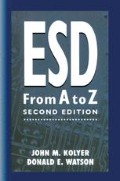Abstract
The system of dendritic cells (DC) comprises a diverse lineage, distributed throughout the tissues of the body, in different stages of development and maturation. DC develop from precursors in the bone marrow but it has proved difficult to isolate these cells in marrow culture. Recently, however, proliferating MHC class II-negative precursors, presumably in transit from the bone marrow to the tissues, have been isolated from mouse blood1. The dendritic leukocytes (DL) resident in the tissues are, by definition, MHC class II-positive, but it is uncertain whether in most tissues there is also a significant population of resident MHC class II-negative precursors. In the thymus2 and neonatal epidermis3, at least, MHC class II-negative precursors have been demonstrated. Langerhans cells (LC) which have the capacity to endocytose and process antigens, and probably other non-lymphoid DL, appear to be immature lymphoid DC that migrate to the lymphoid tissues, via the lymph (or blood), and there as mature DC initiate primary T-dependent responses.
Access this chapter
Tax calculation will be finalised at checkout
Purchases are for personal use only
Preview
Unable to display preview. Download preview PDF.
References
K. Inaba et al, Identification of proliferating dendritic cell precursors in mouse blood, J. Exp. Med. 175: 1157 (1992).
K. Inaba et al, The function of Ia+ dendritic cell and Ia- dendritic cell precursors in thymocyte mitogenesis to lectin and lectin plus interleukin 1, J. Exp. Med. 167: 149 (1988).
N. Romani, G. Schuler and P. Fritsch, Ontogeny of Ia-positive and Thy-1 positive leukocytes of murine epidermis, J. Invest. Dermatol. 86: 129 (1986).
C. P. Larsen et al, Migration and maturation of Langerhans cells in skin transplants and explants, J. Exp. Med. 172: 1483 (1990).
C. P. Larsen, P. J. Morris and J. M. Austyn, Migration of dendritic leukocytes from cardiac allografts into host spleens: a novel pathway for initiation of rejection, J. Exp. Med. 171: 307 (1990).
S. L. Koide, K. Inaba and R. Steinman, Interleukin-1 enhances T-dependent immune responses by amplifying the function of dendritic cells, J. Exp. Med. 165: 515 (1987).
M. Witmer-Pack et al, Granulocyte/Macrophage colony-stimulating factor is essential for the viability and function of cultured murine epidermal Langerhans cells, J. Exp. Med. 166: 1484 (1987).
C. Heufler, F. Koch and G. Schuler, Granulocyte-macrophage colony-stimulating factor and interleukin-1 mediate the maturation of murine epidermal Langerhans cells into potent immunostimulatory dendritic cells, J. Exp. Med. 167: 700 (1988).
F. Koch et al, Tumor necrosis factor α maintains the viability of murine epidermal Langerhans cells in culture, but in contrast to granulocyte/macrophage colony-stimulating factor, without inducing their functional maturation, J. Exp. Med. 171: 159 (1990).
G. G. MacPherson, Properties of lymph-bourne (veiled) dendritic cells in culture: I. Modulation of phenotype, survival and function: partial dependence on GM-CSF, Immunol 68: 102 (1989).
A. Kock et al, Human keratinocytes are a source for tumor necrosis factor α: evidence for synthesis and release upon stimulation with endotoxin or ultraviolet light, J. Exp. Med. 172: 1609 (1990).
A. M. Pollard and M. F. Lipscomb, Characterization of murine lung dendritic cells: Similarities to Langerhans cells and thymic dendritic cells, J. Exp. Med. 172: 159 (1990).
N. Romani et al, Cultured human Langerhans cells resemble lymphoid dendritic cells in phenotype and function, J. Invest. Dermatol. 93: 600 (1989).
G. G. MacPherson, S. Fossum and B. Harrison, Properties of lymph-bourne (veiled) dendritic cells in culture: II. Expression of the IL-2 receptor: Role of GM-CSF, Immunol 68: 108 (1989).
E. N. Lundqvist and O. Back, Interleukin-1 decreases the number of Ia+ epidermal dendritic cells but increases their expression of Ia antigen, Acta Derm Venereol (Stockh) 70: 391 (1990).
M. Cumberbatch and I. Kimber, Dermal tumour necrosis factor-alpha induces dendritic cell migration to draining lymph nodes, and possibly provides one stimulus for Langerhans cell migration, Immunol. 75: 257 (1992).
Author information
Authors and Affiliations
Editor information
Editors and Affiliations
Rights and permissions
Copyright information
© 1993 Plenum Press, New York
About this chapter
Cite this chapter
Roake, J.A., Rao, A.S., Larsen, C.P., Hankins, D.F., Morris, P.J., Austyn, J.M. (1993). Cytokine Mediators of Non-Lymphoid Dendritic Cell Migration. In: Kamperdijk, E.W.A., Nieuwenhuis, P., Hoefsmit, E.C.M. (eds) Dendritic Cells in Fundamental and Clinical Immunology. Advances in Experimental Medicine and Biology, vol 329. Springer, New York, NY. https://doi.org/10.1007/978-1-4615-2930-9_84
Download citation
DOI: https://doi.org/10.1007/978-1-4615-2930-9_84
Publisher Name: Springer, New York, NY
Print ISBN: 978-1-4613-6272-2
Online ISBN: 978-1-4615-2930-9
eBook Packages: Springer Book Archive

